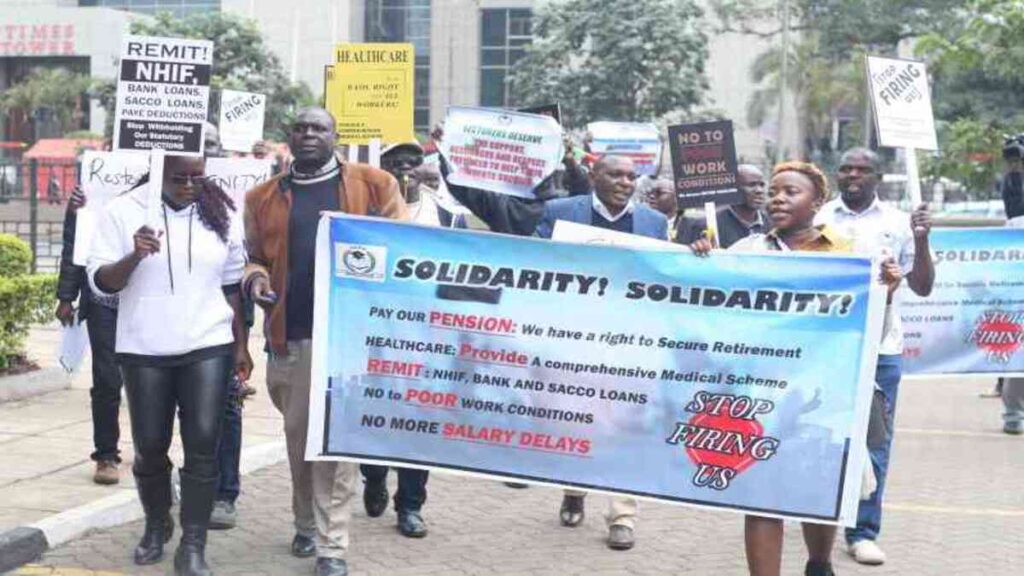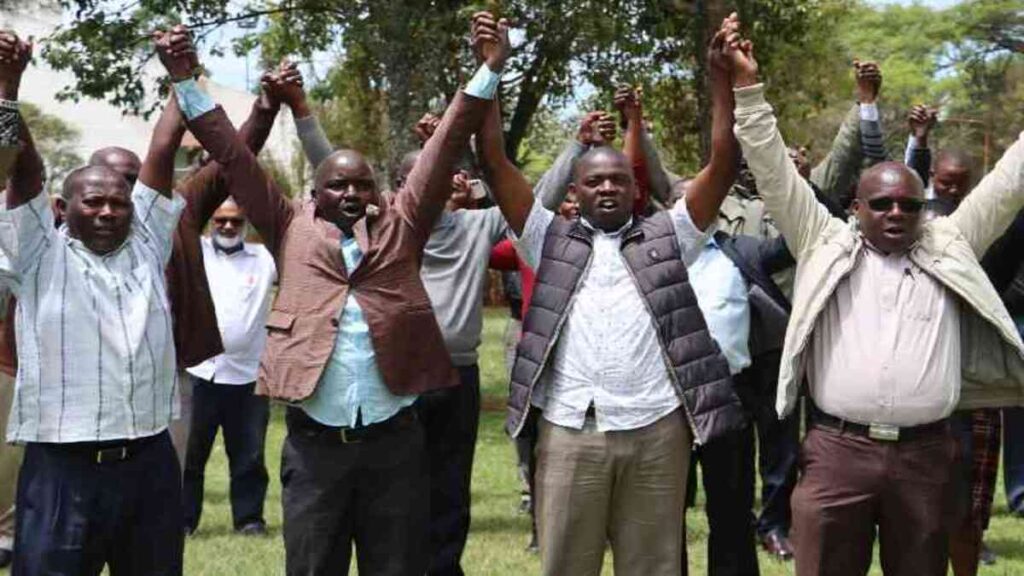Public universities across Kenya face a complete shutdown as lecturers maintain their strike action. The crisis intensified following a failed emergency meeting.
The Universities Academic Staff Union (UASU) rejected government proposals during recent negotiations. They demand implementation of their Collective Bargaining Agreement (CBA).

When UASU members participated in a previous national strike over unimplemented CBA.Courtesy photo
Students remain uncertain about their academic future as classes stay suspended. The strike has affected thousands of learners in public universities.
UASU Secretary-General Constantine Wasonga expressed frustration over broken promises. He cited the government’s failure to honour September’s return-to-work agreement.

University of Eldoret lecturers protest government directive to return to class, on November 6, 2024. [Peter Ochieng, Standard].
However, two months later, these promises remain unfulfilled. This has led to growing anger among university teaching staff.
The Kenya Universities Staff Union (KUSU) has joined UASU in the industrial action. Both unions demand immediate action from the government.
University operations have ground to a halt across the country. Administrative services and teaching activities remain suspended indefinitely.
The unions had given the government a one-week ultimatum to implement changes. This deadline passed without any meaningful response from authorities.
Rising living costs have added urgency to the lecturers’ demands. Many staff members struggle to cope with increasing financial pressures.
The strike’s impact extends beyond the classroom. Research projects and student supervision have also been affected.
Students express concern about completing their academic programmes on time. Many fear the strike could lead to extended semester periods.
University administrators find themselves in a difficult position. They cannot resume normal operations without resolving the staff grievances.
The government’s formation of an inter-ministerial committee has proven ineffective. Negotiations through this channel have yielded no positive results.
UASU leaders warn of prolonged industrial action without concrete solutions. They refuse to accept mere promises without implementation.
The unions demand full implementation of the 2021-2025 CBA. This includes addressing pension dues and other financial obligations.
Previous agreements between the unions and government remain unimplemented. This has created a trust deficit between the parties.
Student leaders have called for swift resolution of the crisis. They worry about the long-term impact on their education quality.
The Ministry of Education faces mounting pressure to resolve the situation. Stakeholders demand immediate intervention to end the stalemate.
Public universities struggle with multiple challenges beyond the strike. These include delayed salary payments and infrastructure issues.
Some institutions report inability to pay staff salaries for several months. This has worsened the already tense situation.
UASU members plan further demonstrations to highlight their grievances. They aim to maintain pressure on the government for action.
The unions remain united in their demand for better working conditions. They insist on full implementation of previously agreed terms.
Economic experts warn of long-term effects on higher education quality. Continued strikes could damage Kenya’s academic reputation.
University staff report increasing difficulties in maintaining living standards. Many have taken loans to cope with financial pressures.
Parents express concern about additional costs from extended semesters. Many fear increased financial burden due to the prolonged crisis.
The government’s silence on implementation timelines frustrates stakeholders. Clear communication about solutions remains lacking.
Student organisations plan solidarity actions with their lecturers. They understand the impact of poor working conditions on education quality.
The crisis highlights deeper issues in public university funding. Sustainable solutions require comprehensive reform of the education sector.



















